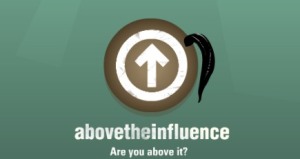 Credibility is another important factor when creating a “sticky” message. A story with details is more believable than a story without. Chapter four of Made To Stick, by Chip Heath and Dan Heath, explains that “concrete details don’t just lend credibility to the authorities who provide them; they lend credibility to the idea itself.”
Credibility is another important factor when creating a “sticky” message. A story with details is more believable than a story without. Chapter four of Made To Stick, by Chip Heath and Dan Heath, explains that “concrete details don’t just lend credibility to the authorities who provide them; they lend credibility to the idea itself.”
When stories are absent of details it leaves the audience with unanswered questions. A prime example of this is with the “Above the Influence” public service announcements. The two psa’s that stand out for this are “The Conversation” and “Sent.” Both psa’s feature a young adults on their cell phones talking to their friend about the other night. Each person is shocked to find out about their behavior from their friend.
The audience never is told what happened the night before or why the young adult cannot remember about their own behavior.
Now, I understand that these commercials leave out details to get people thinking but leaving things up for interpretation can get the message confused. A message without details is at risk of not being communicated. After viewing these psa’s, the audience may think that perhaps the young adults were absent minded or maybe they just fell and bumped their head that night. If this is so, then the message is completely lost.
Why not get straight to the point? The issue of teenage drug abuse is very important and needs to be clearly communicated, don’t you think?


 “Woo,” “Stick” and “Tip” are all words used to describe successful pitching. There are many great how-to books on ways to win over an audience. As public relations practitioners, we are constantly trying to find the best way to communicate key messages. Tiffany Derville mentioned in my Advanced PR Writing class that being able to express your key message is crucial to public relations.
“Woo,” “Stick” and “Tip” are all words used to describe successful pitching. There are many great how-to books on ways to win over an audience. As public relations practitioners, we are constantly trying to find the best way to communicate key messages. Tiffany Derville mentioned in my Advanced PR Writing class that being able to express your key message is crucial to public relations.






